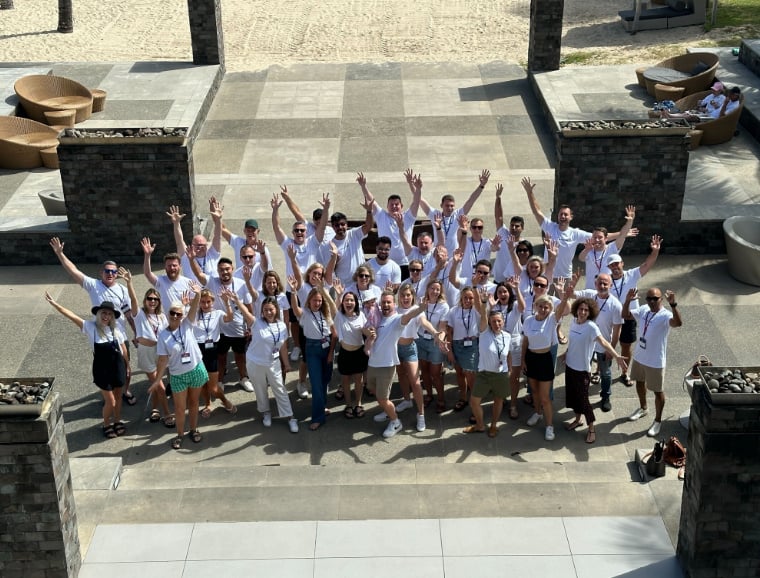The power of psychology in marketing
Your potential customers make hundreds of decisions every day. If your business is lucky, it might feature once or twice in those hundreds of decisions. Understanding the psychology behind how and why people make decisions will give you and your business the edge it needs against your competitors.
In this blog, we’ll explore 4 powerful biases and heuristics (mental shortcuts) that influence decision making, how industry leaders use them to increase conversion, and how you can too.
You’ll come away with a new approach to communicating your business’ value to customers that will have them buying more often, and in greater amounts.
Scarcity
We value things when they’re in short supply. Sounds like an obvious statement, but many business owners forget that scarcity is a powerful motivator for customers to take action. Scarcity not only indicates value but also triggers another powerful driver: the fear of missing out.
Scarcity is used widely by many marketers and business owners. In 2012, a marketing researcher from South Korea, Seung Yun Lee, showed participants two versions of an ad for a watch.
- Version 1 pointed out the large number of stock on hand (“New edition. Many items in stock”).
- Version 2 used scarcity in the messaging (“Exclusive limited edition'. Hurry, limited stocks”).
The results were overwhelming - Version 2 received 58% higher purchase intent than Version 1.
The above image is probably familiar.
Travel sites use scarcity particularly well to drive action, especially with a genuinely limited number of hotel rooms and seats on flights for sale. The additional messaging (“4 people looking right now” and “Booked 7 times today”) helps reinforce the idea that not only is this a great deal, but plenty of others are buying and you’re in danger of missing out.
If there’s one thing worth taking away from this blog, it’s that people are generally loss averse rather than profit-seeking. In other words, people are far more concerned with avoiding losses than they are about seeking out opportunities.
As a result, what you need to be doing is constantly shifting the buyer’s mentality, from one where there’s a fear of making an incorrect or suboptimal purchase, to one where they feel like they’re in danger of missing out on a great opportunity. They need to take action, and they need to do it now!
You might not be selling hotel rooms or flights, but you can still think of other ways to introduce scarcity:
- If you’re a service business, showcase how many appointments or slots you have left for the week or month.
- If you’re in e-commerce, advertise low stock levels, particularly for popular products.
- You can create artificial scarcity by stagnating your pricing, which allows you to use messaging like “last stock available at this price.”
Social proof
As much as we like to think we live independent of other people’s opinions, we definitely don’t. When a trusted friend or family member recommends a product, we tend to take that opinion seriously. Similarly, celebrity endorsements have become an increasingly powerful tool for business owners.
Why? Prospects want to see that real people have bought and used your product or service. If it’s someone they know, that’s a bonus, but social proof even from strangers can still be effective.
Social proof can be presented in a range of ways. The above example is from a company called Buffer, which opted to use user data to represent its large customer base over a long period of time. This data allows Buffer to call this out in their tagline: “Businesses all over the world trust Buffer to build their brands.”
Sometimes testimonials have a far more powerful impact. The above testimonials are from Section4, an online learning business. Not only did Section4 opt to use a number of testimonials, but they also included titles and images of the customers. Acknowledging that prospects most likely haven’t heard of these people, including their job titles and images is important in establishing authenticity and credibility.
Depending on your business, you might choose to use data, or you can use:
- Testimonials
- Case studies
- Reviews
- Trust icons
- Blogs
How you want to present social proof to your prospects is up to you, but ultimately you want to show that:
- Real people have used your product or service
- They are advocates for your business
Make it simple
Consumers have never been so overwhelmed with options. To make sure your business is capturing as many potential customers as possible, you need to be easily understood and easy to buy from.
Like many of these examples, it seems straightforward, but it’s also where many businesses fall over.
In 2017, two researchers conducted a test where parents were invited to participate in a new service. The researchers used three different messages sent in the study:
- Standard (enroll by visiting a website and filling in a form)
- Simplified (enroll by replying ‘Start’)
- Automatically (told that they were enrolled but could opt-out by replying ‘Stop’)
The researchers knew that there would be a difference in outcomes, but the results were dramatic. 96% from the Automatic Enrolment group (Text 3) remained enrolled, compared to 1% and 8% from groups 1 and 2 respectively.
Regular Amazon buyers will recognise the options above.
Amazon introduced ‘Buy now with 1-Click’ in 2017, and the feature has been a game-changer for the retail giant. Users with registered billing and shipping information can buy direct from product pages - just with 1 click. Even a company as large as Amazon recognises the massive difference that reducing friction and keeping things simple can make.
If you’re in e-commerce, there are plenty of solutions that can allow you to integrate Buy In 1 Click functionality. If you use Shopify, you can explore some of their supported apps that enable one-click checkouts on your site.
Small, seemingly inconsequential extra steps can create massive friction in your customer journey. Go through the steps that a customer would need to take to purchase from you and ask:
- Is each step necessary?
- Can steps in the process be combined or removed?
- Is any part of the process confusing? Can it be communicated better?
Even if the changes you end up making are small, you’re still making it easier than before for your customers. And as we’ve seen, the effects might be greater than you think.
Use pricing to your advantage
When customers are given a range of choices, they tend to shy away from extremes, and instead pick the middle option.
Let’s look at the above example from Mailchimp. The three packages are priced fairly evenly, with some additional features at each level. Which would you be likely to choose?
This is the final version released by Mailchimp. You can notice two differences; the additional Premium package, priced at $299, and the inclusion of the ‘Recommended’ banner above the Standard package. All of a sudden, the $14.99 seems like the best offer by far. This is the result of price anchoring; establishing a price point that customers can refer to when making decisions.
The inclusion of these two features completely changes the context of the offer, and the way buyers interpret the value being presented. Look closely enough, and you’ll see this pricing strategy emulated everywhere; from phone and credit card plans to popcorn prices at the cinema.
- Think about the optimal price point for your offer
- Create a pricing structure that includes 3-4 pricing options for your products and services
- Use an expensive, premium option as an outlier that acts as an anchor and nudges customers to your desired option
Takeaways
Many of the behavioural drivers we’ve explored in this blog are straightforward to utilise in your business right now, and you’ll quickly see the effects as a result.
While many aspects of business are in a constant state of change, the innate forces behind our decision-making, and the way we need to appeal to those forces, will always stay the same.
If you need further marketing resources to take your business to the next level in 2022, make sure to check out our Marketing Budget Templates and Social Media Templates today.
Related Categories
Ryan Terrey
As Director of Marketing at The Entourage, Ryan Terrey is primarily focused on driving growth for companies through lead generation strategies. With a strong background in SEO/SEM, PPC and CRO from working in Sympli and InfoTrack, Ryan not only helps The Entourage brand grow and reach our target audience through campaigns that are creative, insightful and analytically driven, but also that of our 6, 7 and 8 figure members' audiences too.





